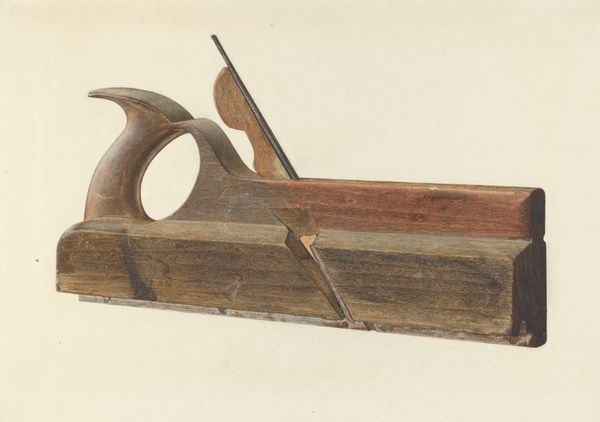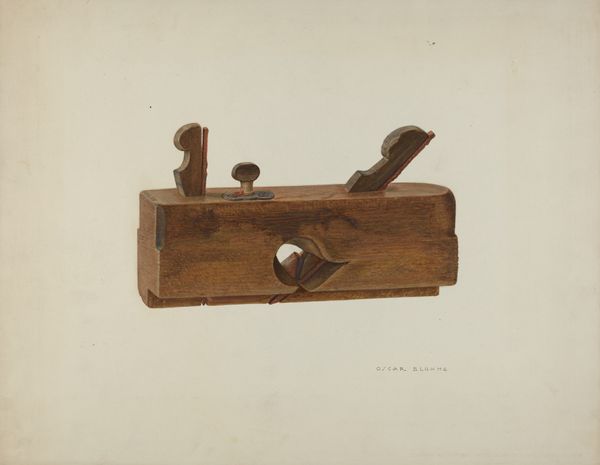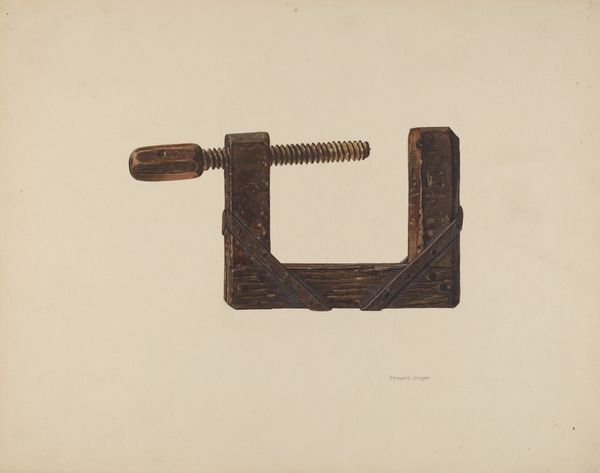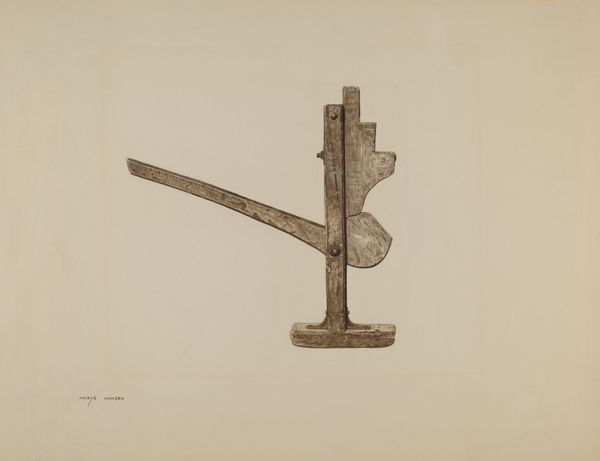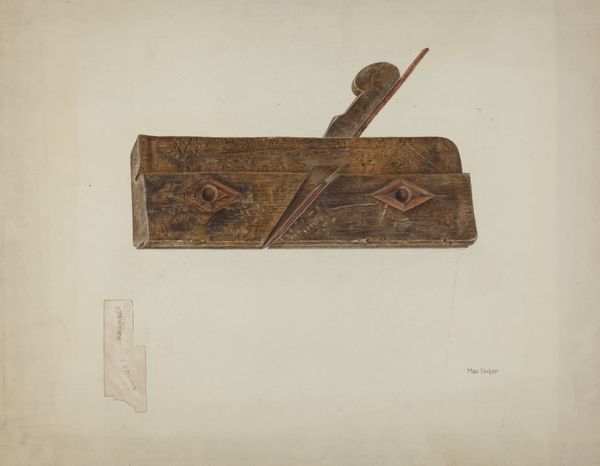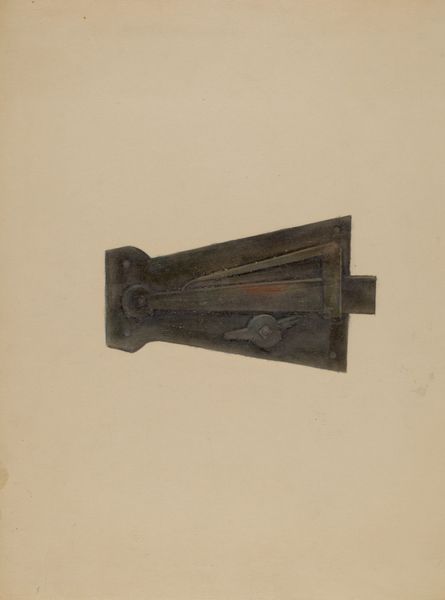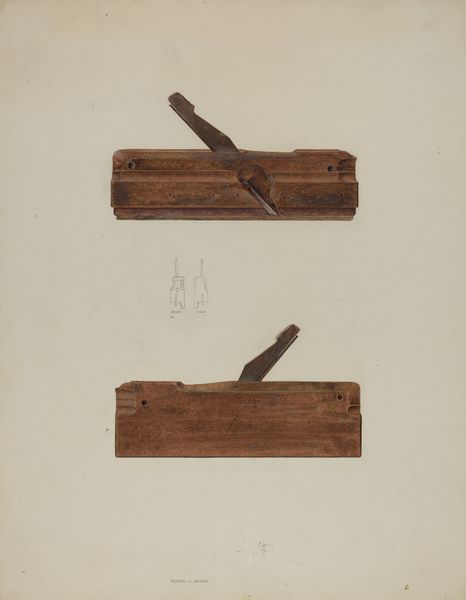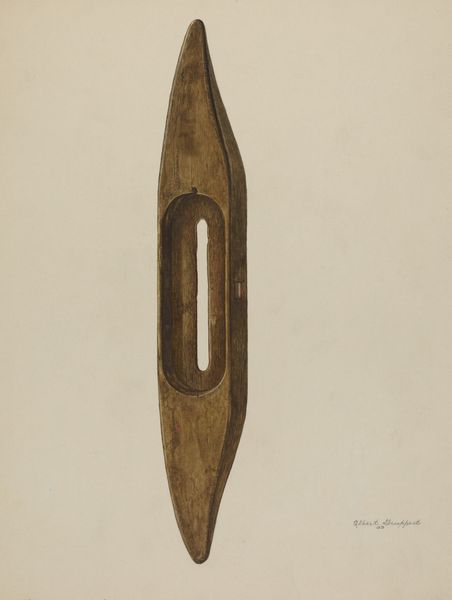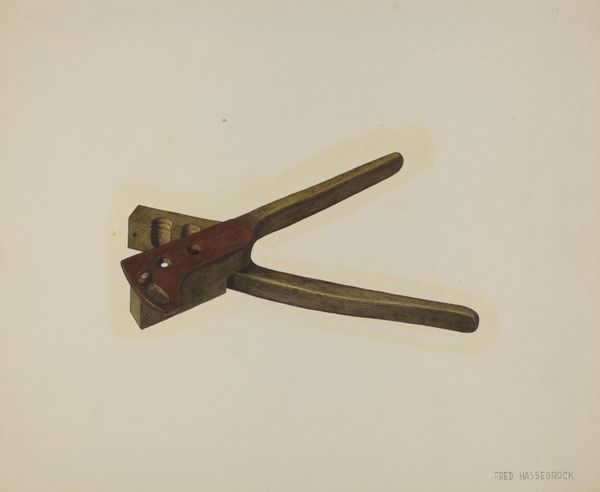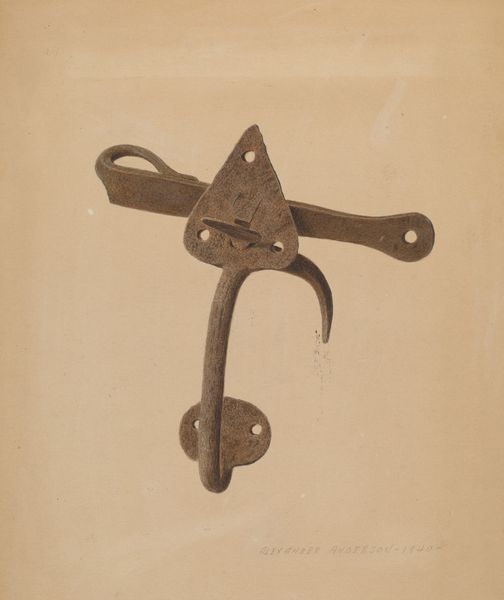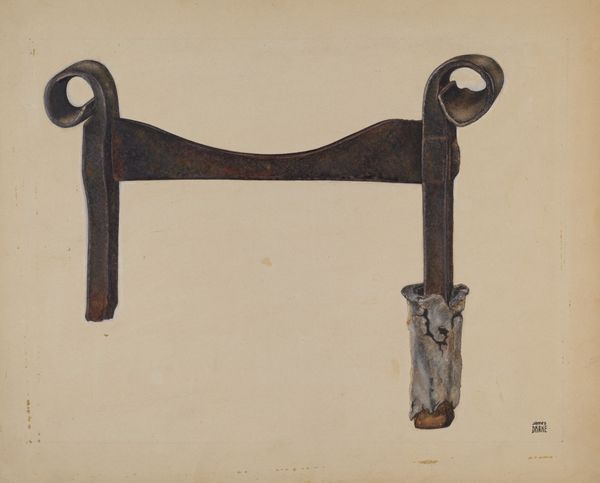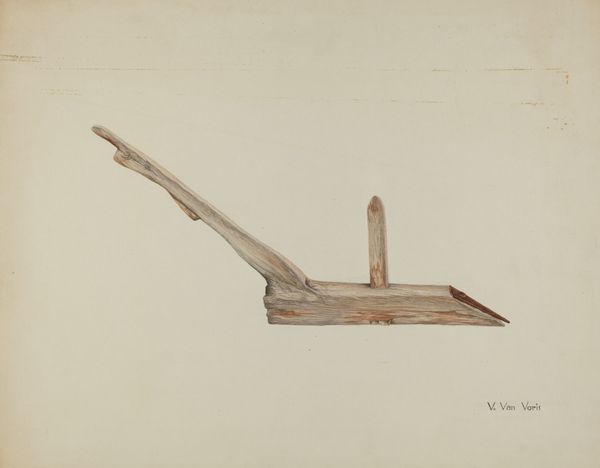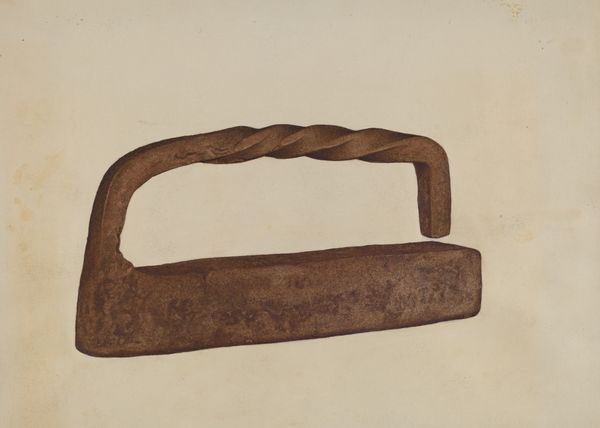
drawing, paper, watercolor
#
drawing
#
water colours
#
paper
#
watercolor
#
watercolour illustration
#
modernism
#
watercolor
#
realism
Dimensions: overall: 31 x 39.4 cm (12 3/16 x 15 1/2 in.) Original IAD Object: 3 3/8" high; 9 1/2" wide; 5/8" deep
Copyright: National Gallery of Art: CC0 1.0
Editor: Here we have "Plane" by Max Unger, created in 1939 using watercolor on paper. It depicts… well, a plane, the woodworking tool. There's a stark simplicity to it, almost clinical, and the rendering of the wood grain is quite detailed. How should we interpret this? Curator: The choice of a mundane object during 1939 is significant. Consider the socio-political landscape. With the rise of totalitarian regimes and impending war, everyday objects often became potent symbols. Why choose to depict this particular tool so carefully, at this specific historical juncture? Editor: Maybe to highlight craftsmanship and labor, especially as industrialization was changing production? Was there an artistic movement focused on that? Curator: Exactly. The Neue Sachlichkeit, or New Objectivity movement, springs to mind. It emerged in Germany after World War I as a reaction against Expressionism's emotional excesses. Artists turned to a more realistic and detached representation of the world. They aimed to portray the social realities and the changing industrial landscape, holding it up to scrutiny. Would you say this artwork critiques or celebrates labor and craft? Editor: I think there’s an appreciation of craft here, the detail suggests a respect for the tool itself, although it is slightly removed through being a watercolor illustration rather than the thing itself. I didn’t think about it in relation to New Objectivity. Curator: The context is vital. Unger might have been making a statement about the value of skilled labor amidst the growing mechanization and looming global conflict. Editor: Seeing it that way gives the piece much more depth than just a simple object study. Curator: Indeed. By understanding the historical forces at play, we can decode the multiple layers of meaning embedded in seemingly ordinary images. I appreciate how thinking through this object highlights broader social contexts. Editor: It certainly enriches my understanding. Thank you for shedding light on its historical and social relevance.
Comments
No comments
Be the first to comment and join the conversation on the ultimate creative platform.
